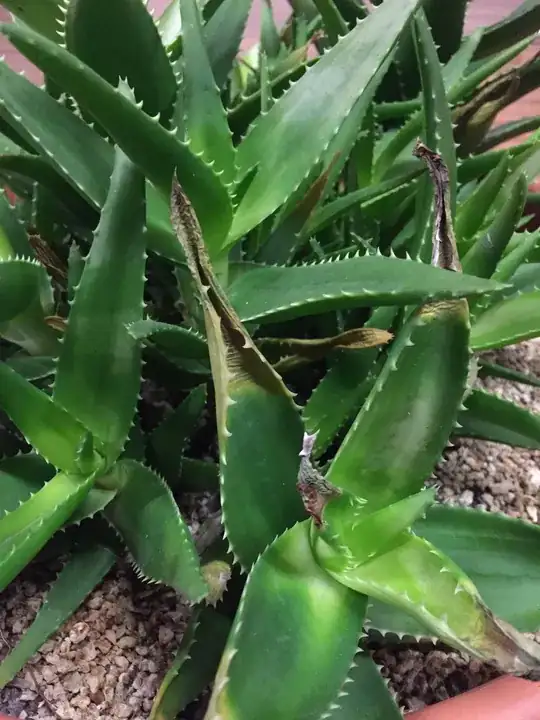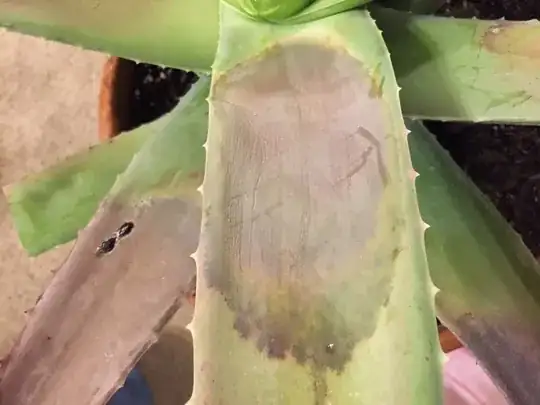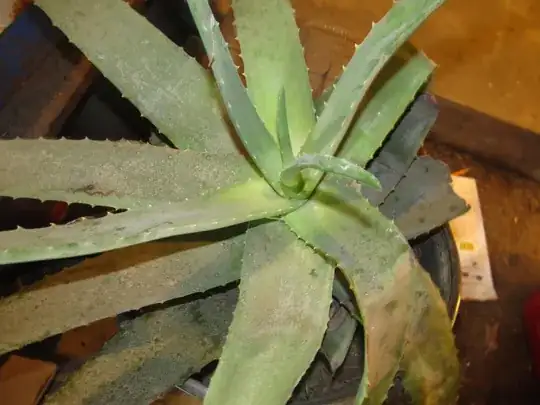I have had this plant of aloe for years, and it has always given me great satisfaction. Easy to take care of, I had separated it into different pots but now decided to keep it all together into a large one - and it has been a great idea.
It withstood changes in the position too: from a south-facing window sill, when I put it all together it was placed outside on the western porch, receiving a lot of light and it sprouted even more. I brought it in for the winter, and placed it in a well-lit area and it was fine.
However, one day I had the terrible idea of putting it outside in the winter for some sunlight (we had an unusually warm winter) and obviously I forgot to taking it back in at night and obviously it turned out to be the coldest night of the year.
The leaves turned white almost immediately, but the damage was very limited. I thought it was just the cold, so I kept it inside, placed it where it gets a lot of light but no direct sunlight and waited to see if it could get some color back.
It turned worse, as you can see in the pictures.
Some even started to brown
I found this article where they say it could be sunburnt. However I don't know how that's possible, it's been in almost direct sunlight in August and it didn't turn out like this. And I know from this question that the damaged brown leaves will have to be cut.
So finally my question(s):
Is it a sunburnt aloe as the article states? Is the damage recoverable?




